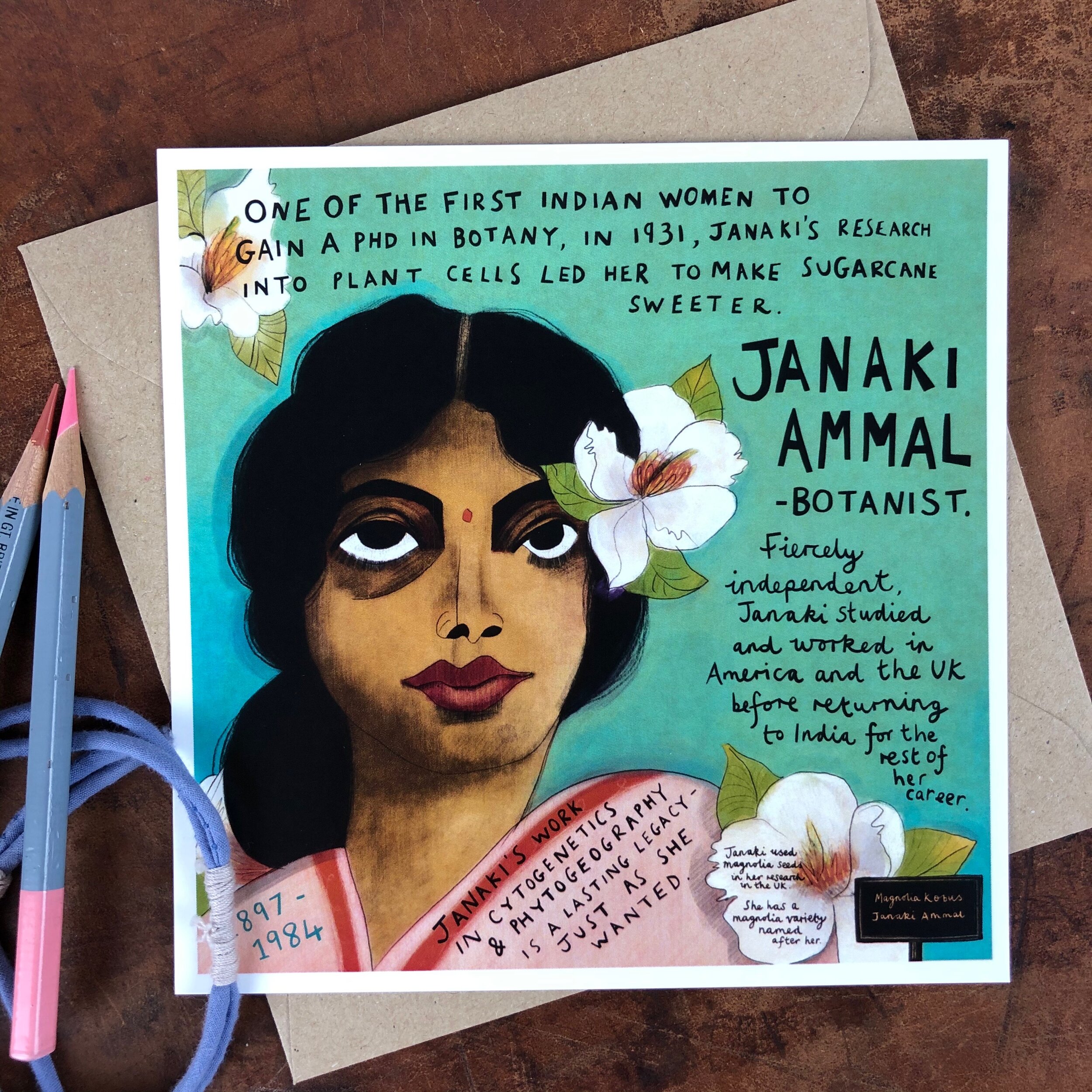Have You Heard Of... Janaki Ammal?
Janaki Ammal was a botanist.
Born in Kerala in 1897, Janaki was the tenth of thirteen children born to Dewan Bahadur Edavalath Kakkat Krishnan and his second wife Deviamma. Krishnan was a learned man, and he infused his well-educated children with his own love of natural sciences, the study of birds, and botany.
Janaki studied for her bachelor’s degree at Queen Mary’s College, in Madras, and an honours degree in Botany, in 1921, from the Presidency College, acquiring an interest in cytogenetics, the study of chromosomes and cell behaviour. Janaki then won the prestigious Barbour Scholarship, allowing her to travel to the US, to study at the University of Michigan. She gained her Master’s degree there in 1925, before returning to India to teach. Back in Michigan, Janaki earned her Phd in Botany in 1931, one of the first women from India to do so.
Next… to India. Janaki’s skill and research in cytogenetics enabled her to make sugarcane sweeter, through the crossbreeding of hybrids, while she was working in the Sugarcane Breeding Institute at Coimbatore. In 1940, she was given a position at the John Innes Horticultural Institute in London, where she worked on The Chromosome Atlas of Cultivated Plants, with an Englishman who was to become her friend and mentor, C.D. Darlington. Janaki had smuggled a palm squirrel into the UK in the folds of her sari. Called Kapok, it lived at the John Innes Institute for years.
Just before lockdown, I took a drive out to Wisley, where Janaki worked next, from 1945 – 1950. I was looking for the magnolia tree named after her, apparently still flowering on Battleston Hill behind the house. I didn’t find it, though I spent a happy hour alone, far from other people, with no notion of the social distancing we were all about to endure, searching and diving into the undergrowth to study the plant labels. I’ll go back next year to look again!
Janaki was truly an adventurer, happy to go her own way, and fiercely independent. Highly respected in her field, on her return to India, something personally requested by Prime Minister Nehru, Janaki worked on the Botanical Survey of India. Over the years, her focus evolved from the commercial use of botany, to the preservation of indigenous plants.
One of Janaki’s achievements in later years was to lend her expertise and academic reputation to successfully campaign for the saving of Silent Valley, in Kerala. The forest was saved. It was not flooded and made into a lake, instead, it became a national park in 1984.
Janaki Ammal died in 1984, just months before the saving of the Valley. Though a little-known figure outside the parameters of her career, Janaki’s work is a lasting legacy, just as she had wanted.
Want to read more?
An article by her niece, Geeta Doctor
Sources:
https://thewire.in/science/janaki-ammal-magnolia-edathil
https://scientificwomen.net/women/ammal-janaki-111
https://www.jic.ac.uk/training-careers/postgraduate-opportunities/janaki-ammal-scholarships/
https://www.thebetterindia.com/75174/janaki-ammal-botanist-sugarcane-magnolia/
https://en.wikipedia.org/wiki/Janaki_Ammal

